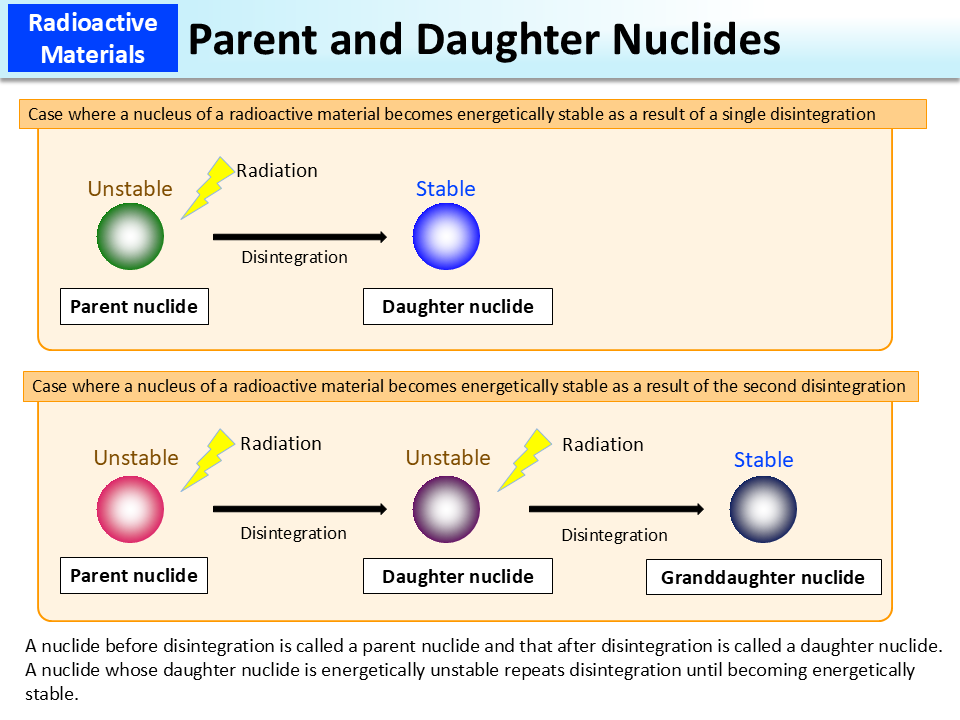Parent and Daughter Nuclides
Types of atoms and nuclei classified depending on the number of protons and neutrons are called nuclides. For example, Carbon-12 and Carbon-14 are both carbons but are different nuclides. Carbon-14 is a radionuclide as it is energetically unstable.
The phenomenon wherein a radionuclide emits radiation and transforms into a different nuclide is called disintegration. A nuclide before disintegration is called a parent nuclide and that after disintegration is called a daughter nuclide.
Some radionuclides remain energetically unstable even after disintegration, which means that the original radionuclides have transformed into other types of radionuclides. These types of radionuclides repeat disintegration until becoming energetically stable. A nuclide resulting from the disintegration of a daughter nuclide (seen from a parent nuclide) is sometimes called a granddaughter nuclide, and such daughter nuclide and granddaughter nuclide are collectively called progeny nuclides.
- Included in this reference material on February 28, 2018

